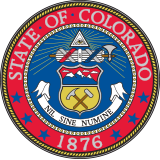State Speed Limits
Colorado law establishes speed limits for roads and highways within the state. The Colorado Department of Transportation (CDOT) and local authorities may change the speed limit for any road under their respective jurisdictions if the department or local authority determines that the speed limit established by law is greater or less than what is reasonable or safe for road or traffic conditions. Neither CDOT nor any local authority, however, may increase the speed limit above 75 miles per hour (mph) on any highway. The table below provides speed limits on Colorado roadways.
State Speed Limits
|
Type of Road or Highway |
Speed Limit |
|---|---|
|
Narrow, winding mountain highways, or blind curves |
20 mph |
|
Any business district |
25 mph |
|
Any residential district |
30 mph |
|
Open mountain highways |
40 mph |
|
Open highways that are not a part of the interstate system and are not four‑lane freeways or expressways |
55 mph |
|
Surfaced, four‑lane highways that are a part of the interstate system or expressways |
65 mph |
|
Source: Section 42‑4‑1101, C.R.S. |
|
- obey traffic control devices;
- enter or exit I‑70;
- compensate for weather or traffic conditions; or
- navigate a lane closure or blockage.
